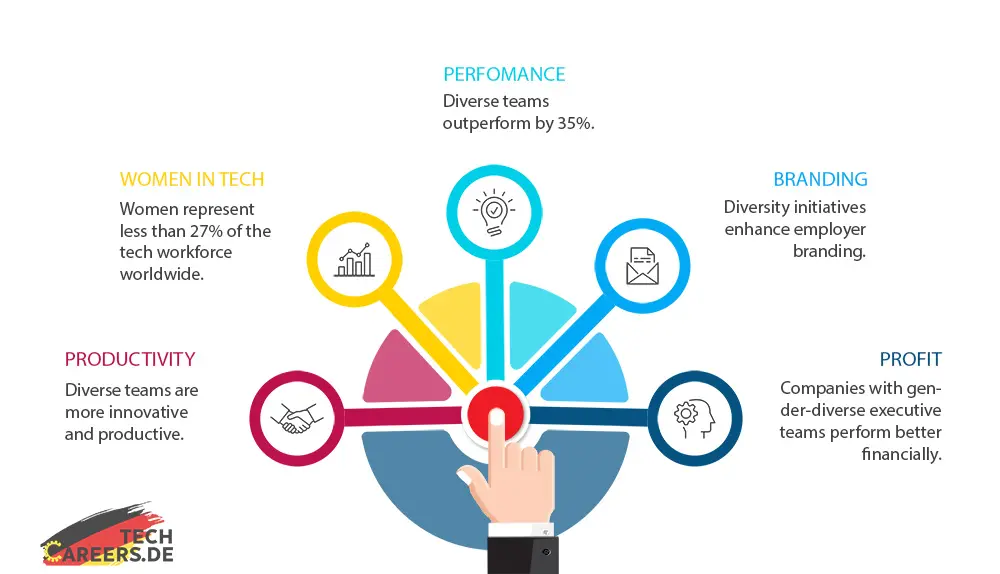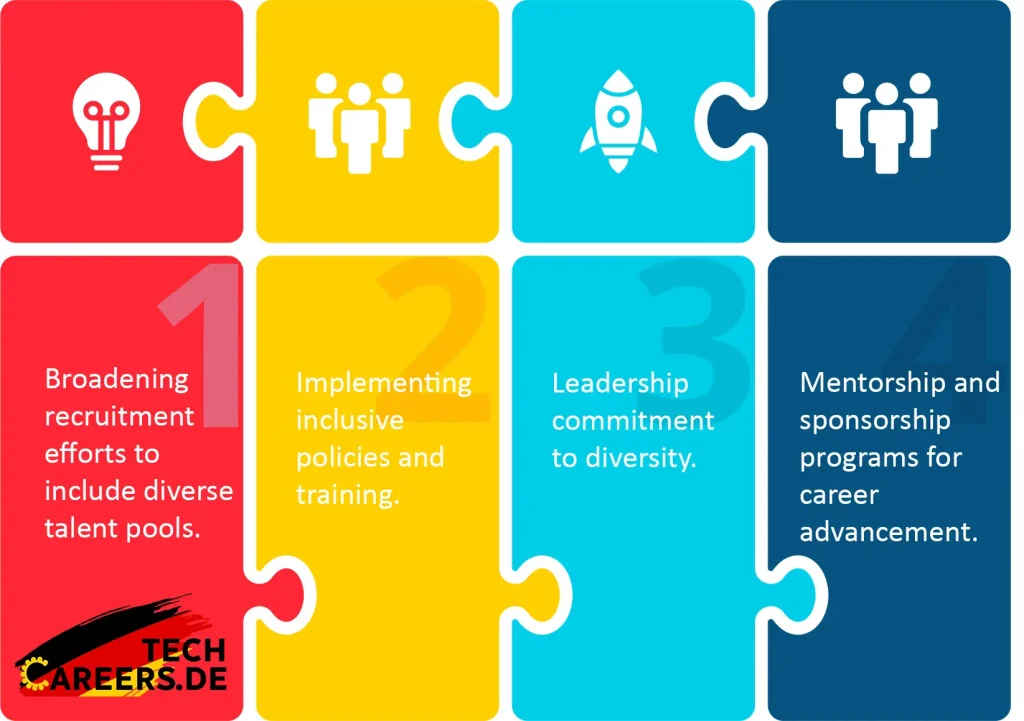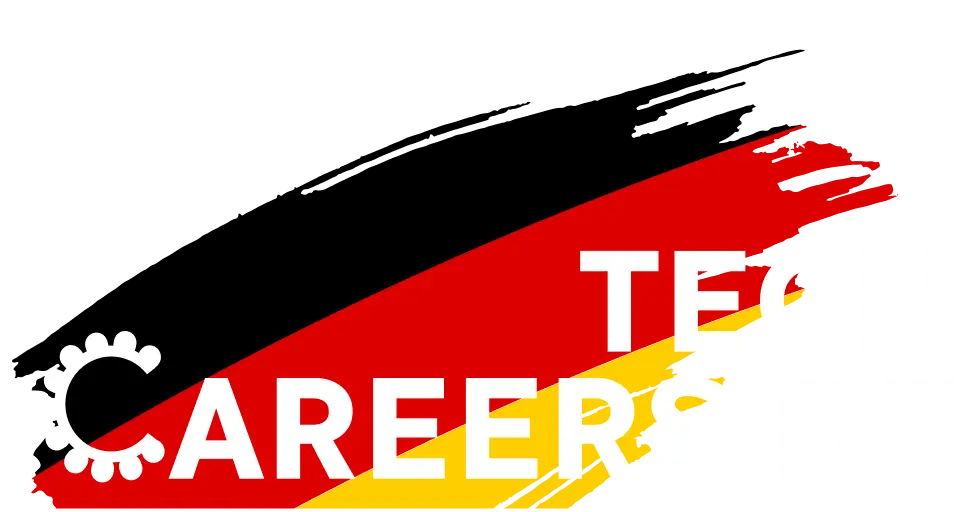
Have you ever wondered why some tech companies thrive with innovation while others struggle? The secret often lies in the fabric of their teams. In the realm of technology, diversity isn’t just a buzzword; it’s a pivotal factor in driving creativity and growth. A diverse team brings together varied perspectives, experiences, and ideas, essential for innovation in this rapidly evolving sector.
Yet, despite its importance, the tech industry often faces challenges in embracing diversity fully. This article delves into the current state of diversity in tech companies, particularly focusing on gender diversity, and explores why and how the tech industry should strive to improve it. From assessing the present scenario to outlining actionable strategies, we’ll navigate the multifaceted landscape of diversity and inclusion in the tech world, underscoring its significance in shaping a more equitable and dynamic future.
Furthermore, addressing diversity in technology companies requires a concerted effort from industry leaders, policymakers, and society as a whole to foster inclusive environments where all individuals have equal opportunities to thrive and contribute their unique perspectives.
Current State of Diversity in Tech Companies
As we delve into the landscape of diversity in tech, particularly within Germany, a striking picture emerges. While strides have been made, there is still a considerable journey ahead. For instance, a recent report highlights that gender diversity in tech companies remains uneven, with women representing only a fraction of technical roles.
In Germany, the gender gap is noticeable, extending beyond representation to areas such as software engineer salaries, where discrepancies between male and female professionals are often apparent, including in the context of software engineer salary Munich.
This disparity isn’t just a gender issue; it extends across various dimensions of diversity, including ethnicity, age, and educational background. The diversity and inclusion (D&I) landscape varies significantly across different tech sectors, with some areas showing more progress than others. For example, newer tech fields like AI and machine learning exhibit more diversity than traditional sectors like hardware engineering.
Identifying the best technology companies for diversity requires a comprehensive assessment of their commitment to inclusivity, representation, and equity across all facets of their operations, from hiring practices to workplace culture and beyond.
However, these statistics only scratch the surface. They highlight the need for a deeper understanding and more concerted efforts towards improving diversity and inclusion in tech companies. As the tech industry continues to evolve, the push for a more diverse workforce isn’t just a moral imperative but a business necessity.
The Importance of Diversity and Inclusion in Tech
Why should tech companies invest in diversity and inclusion? The answer lies in the myriad benefits these efforts bring. Research has consistently shown that diverse teams are more innovative and productive. A study by McKinsey & Company revealed that companies in the top quartile for gender diversity on their executive teams were 25% more likely to have above-average profitability than companies in the lowest quartile. This statistical insight underscores the tangible business benefits of diversity.
Beyond financial performance, diversity significantly impacts company culture and employee satisfaction. Diverse environments foster a sense of belonging and respect, leading to higher job satisfaction and lower employee turnover rates. This inclusive culture is not just about feeling good; it translates into better decision-making and problem-solving within teams.
Moreover, diversity is crucial for companies to effectively understand and serve their diverse customer base. With the tech industry increasingly global, understanding varied markets and user groups is imperative. Companies with diverse teams are better equipped to empathize with and meet the needs of different demographics, leading to more successful products and services in the global market.
In essence, diversity and inclusion in tech are not just moral imperatives; they are strategic imperatives that drive innovation, cultural richness, and business success.

Challenges to Achieving Diversity in Tech
Despite recognizing its importance, achieving diversity in tech is fraught with challenges. One major barrier is the deeply ingrained cultural norms and biases within the industry. These biases often manifest in hiring practices, workplace interactions, and promotional decisions, subtly perpetuating homogeneity. For instance, the stereotype of the ‘ideal tech worker’ can unintentionally exclude diverse talent pools, impacting not only workforce composition but also aspects like employer branding for talent acquisition.
Systemic issues also play a significant role. Educational and socio-economic disparities contribute to the underrepresentation of certain groups in tech. From early education to professional development, access to opportunities is uneven, creating a pipeline problem that feeds into the tech industry.
Addressing these challenges requires a multifaceted approach, encompassing everything from rethinking recruitment strategies to fostering inclusive workplace cultures. As tech companies grapple with these issues, the path forward involves not just good intentions, but strategic actions rooted in a deep understanding of the underlying barriers to diversity and inclusion.
Gender Diversity in the IT Industry in Germany
Diving deeper into the realm of IT, the importance of gender diversity becomes even more pronounced. The IT industry, often seen as a subset of the broader tech sector, faces its own unique challenges and opportunities in fostering gender diversity. Current trends show that while women have made significant strides in various professional fields, their representation in IT roles lags behind. For instance, a study in 2022 highlighted that women constitute only about 20% of the IT workforce in Europe, underscoring a significant gender gap.

This disparity in the IT industry not only affects workplace dynamics but also influences aspects like software engineer salaries in Germany, where gender-based pay gaps are still prevalent. Addressing this imbalance is crucial not just for fairness but for the industry’s overall health and progress. Diverse teams in IT have been shown to enhance problem-solving capabilities and drive more innovative solutions, essential in a field that’s constantly evolving.
To tackle this, companies are exploring various avenues to find IT jobs in Germany that appeal to a more diverse talent pool. Initiatives include targeted mentorship programs, inclusive hiring practices, and creating supportive networks for women in IT. By prioritizing gender diversity, the IT industry stands to gain a more dynamic, creative, and competitive edge, aligning with the broader goal of ‘diversity in tech’ to foster an inclusive and innovative future.
Strategies to Improve Diversity and Inclusion in Germany
To boost diversity and inclusion in IT in Germany, companies must adopt a proactive and multifaceted approach. One effective strategy is to broaden recruitment efforts. One effective strategy is to broaden recruitment efforts. Traditional hiring practices often overlook diverse talent pools. Embracing non-traditional educational backgrounds, hosting inclusive job fairs, and partnering with organizations that support underrepresented groups can significantly expand the recruitment net.
This approach not only enhances diversity but also strengthens employer branding for talent acquisition, making a company more attractive to a wider range of candidates. Embracing such initiatives is crucial for promoting diversity in tech industry and ensuring that all individuals have equal opportunities to contribute and succeed.
Inclusive policies and training are also vital. Companies need to ensure their policies are not just on paper but actively practiced and reinforced. Regular training sessions on unconscious bias, cultural sensitivity, and inclusive communication can cultivate an environment where all employees feel valued and included.

Leadership plays a critical role in this journey. Leaders set the tone for the company culture and their commitment to diversity can inspire others. In fact, a study by PwC found that 85% of CEOs whose organizations have a diversity and inclusion strategy say it has improved their bottom line.
Lastly, mentorship and sponsorship programs within companies can help underrepresented groups advance in their careers, addressing the disparity in leadership roles.
Implementing these strategies requires a commitment to long-term change, but the benefits far outweigh the efforts, leading to more innovative, empathetic, and successful tech companies.
Future Tendencies for Diversity in Tech Companies
As we look towards the future, the importance of diversity and inclusion in tech remains paramount. Emerging trends indicate a growing awareness and commitment to these values within the industry. Companies are increasingly recognizing that a diverse workforce is not just a moral imperative but a competitive advantage in the rapidly evolving tech landscape. The future of tech is one where diversity is not just an afterthought but a foundational aspect of company culture and innovation. This evolution promises not only a more equitable industry but also one that is more dynamic, creative, and reflective of the diverse world it serves.
Looking to Improve Diversity in Your Tech Company?
Hire with Tech-Careers.de!
Post your job in our listing and get viewed by thousands of candidates from various DEI groups. Contact us today and let's make your team better together!
Let’s Sum Up
Embracing diversity and inclusion is not just a moral imperative for tech companies; it’s a strategic necessity. From enhancing innovation and productivity to reflecting an increasingly global customer base, the benefits of a diverse workforce are clear and multifaceted. While challenges persist, the path forward involves intentional strategies and commitment from leadership. By learning from success stories and embracing best practices, tech companies can not only create a more equitable work environment but also secure a competitive edge in the dynamic tech landscape. It’s time for industry leaders and stakeholders to act and make diversity and inclusion a core part of their organizational ethos.





 Previous Post
Previous Post Next Post
Next Post